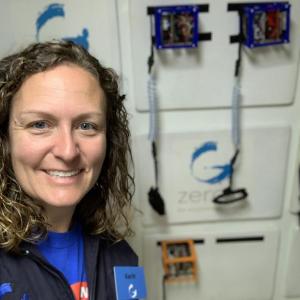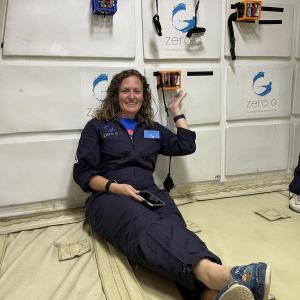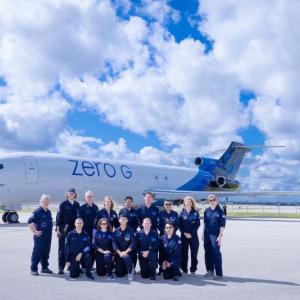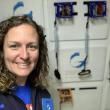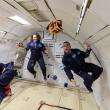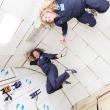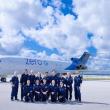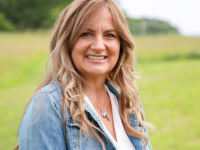It’s zero gravity for BRHS grad!
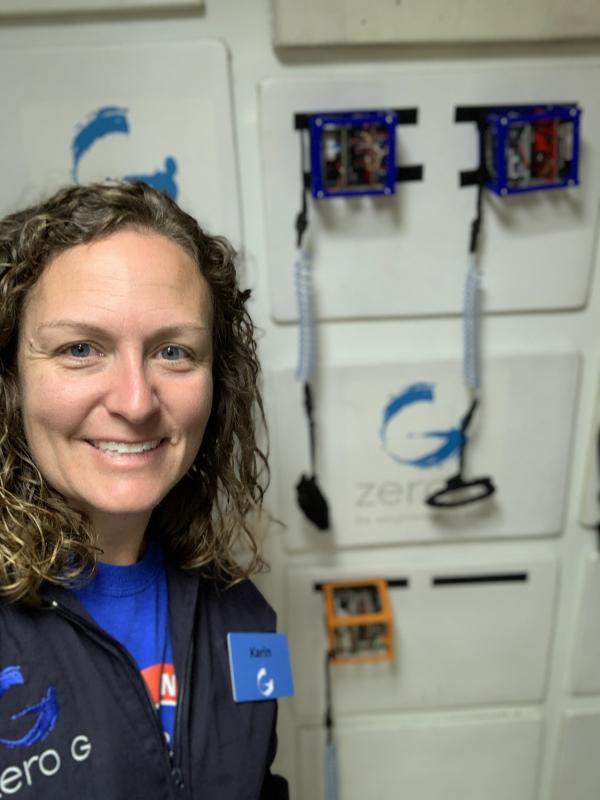 Teacher in space Karin Iuzzolino-Paquin. Courtesy photo
Teacher in space Karin Iuzzolino-Paquin. Courtesy photo
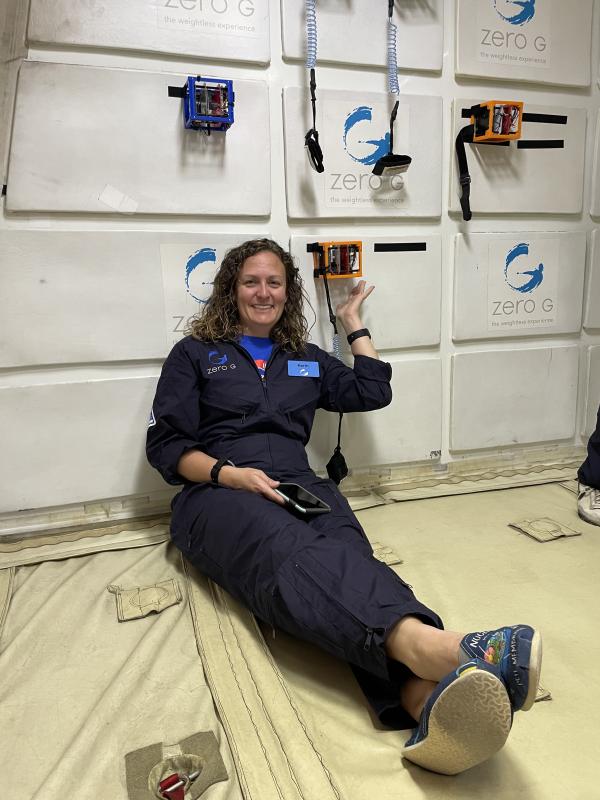 Karin Iuzzolino-Paquin sits beneath research CubeSats on board Zero Gravity Corporation’s G-FORCE ONE. Courtesy photo
Karin Iuzzolino-Paquin sits beneath research CubeSats on board Zero Gravity Corporation’s G-FORCE ONE. Courtesy photo
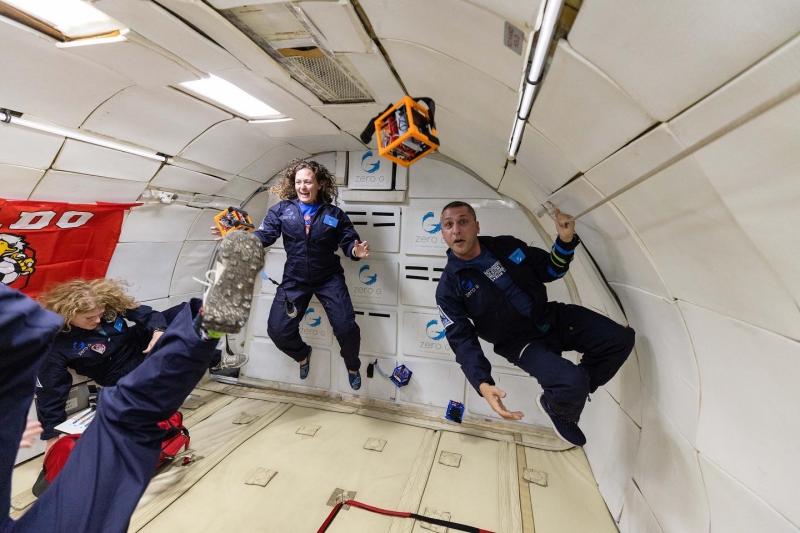 Iuzzolino-Paquin and fellow teachers become weightless as G-FORCE ONE descends. Courtesy photo
Iuzzolino-Paquin and fellow teachers become weightless as G-FORCE ONE descends. Courtesy photo
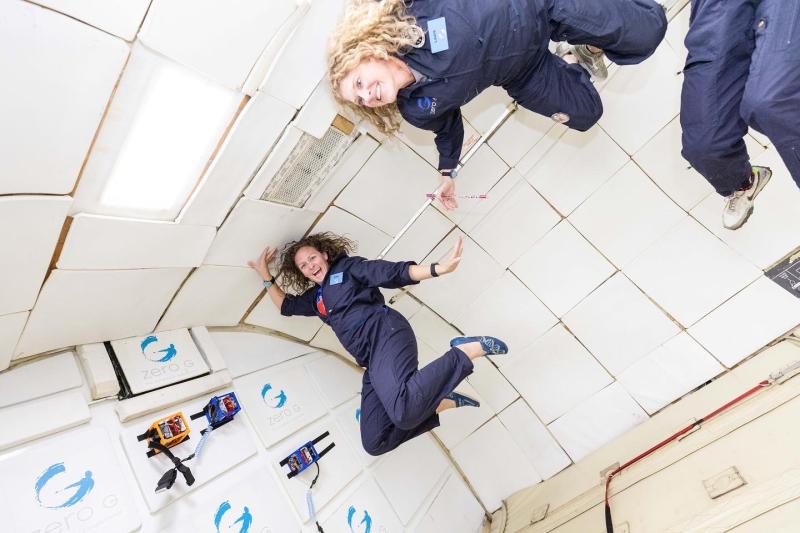 Floating around the cabin of Zero Gravity Corporation’s G-FORCE ONE. Courtesy photo
Floating around the cabin of Zero Gravity Corporation’s G-FORCE ONE. Courtesy photo
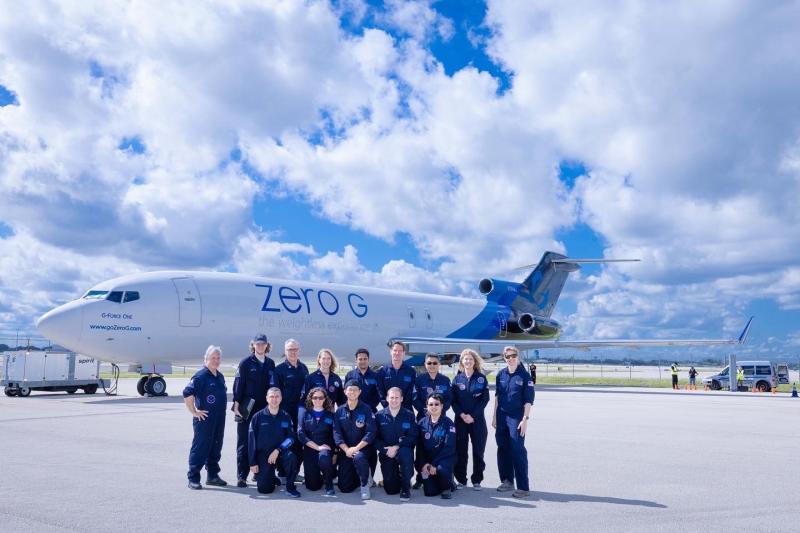 Karin Iuzzolino-Paquin with fellow members of the human flight program. Courtesy photo
Karin Iuzzolino-Paquin with fellow members of the human flight program. Courtesy photo
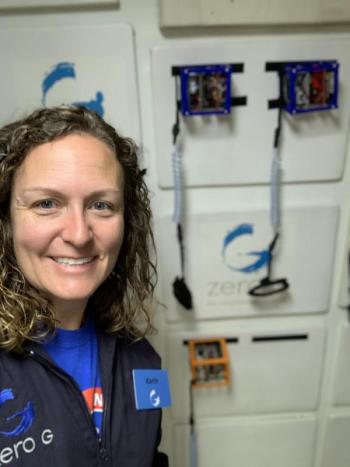 Teacher in space Karin Iuzzolino-Paquin. Courtesy photo
Teacher in space Karin Iuzzolino-Paquin. Courtesy photo
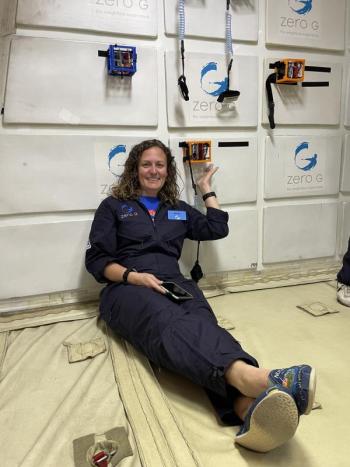 Karin Iuzzolino-Paquin sits beneath research CubeSats on board Zero Gravity Corporation’s G-FORCE ONE. Courtesy photo
Karin Iuzzolino-Paquin sits beneath research CubeSats on board Zero Gravity Corporation’s G-FORCE ONE. Courtesy photo
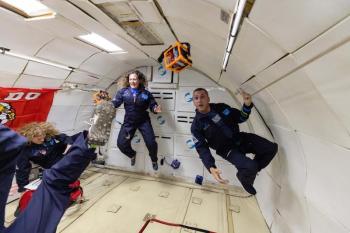 Iuzzolino-Paquin and fellow teachers become weightless as G-FORCE ONE descends. Courtesy photo
Iuzzolino-Paquin and fellow teachers become weightless as G-FORCE ONE descends. Courtesy photo
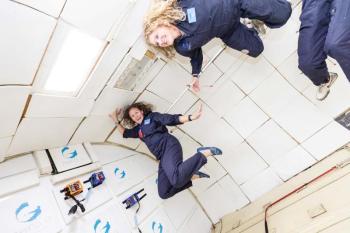 Floating around the cabin of Zero Gravity Corporation’s G-FORCE ONE. Courtesy photo
Floating around the cabin of Zero Gravity Corporation’s G-FORCE ONE. Courtesy photo
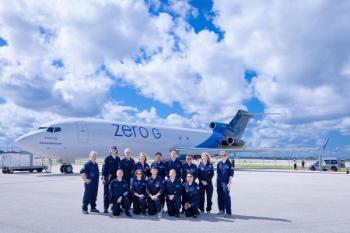 Karin Iuzzolino-Paquin with fellow members of the human flight program. Courtesy photo
Karin Iuzzolino-Paquin with fellow members of the human flight program. Courtesy photo
Sometimes the planets just align.
For 2003 BRHS graduate Karin Iuzzolino-Paquin, a trip to the grocery store, a newspaper ad and her teaching goals aligned for her selection to the Teachers in Space Human Flight Program.
A science teacher for grades six through eight at St. John’s Catholic School in Brunswick, the Lisbon resident spent last year working with her students on a Mars colony curriculum created by University of Arizona and hosted by National Geographic.
Those lessons presented 10 tasks for the students which included designing the “mission” patch for their spacesuits, understanding astronauts’ dietary needs and deciding occupations needed for a Martian colony. Iuzzolino-Paquin created a website for her students to use during the project.
As the school year ended, she wondered, “How could I take some of the things they learned this year and use it for next year?”
In June, her mother picked up a local newspaper at the grocery store. The newspaper had an ad for a flight experiment workshop in August at Brunswick Landing and sponsored by Teachers in Space. Iuzzolino-Paquin signed up.
In the five-day workshop, she learned to build CubeSats – miniature satellites used in space for scientific research and which could be brought back to her students to create their own projects. With an undergraduate degree from UNE in marine biology, she wanted to incorporate research into their classwork.
Several weeks later she received a letter from Teachers in Space telling her she was one of five teachers in the U.S. picked for the human flight program provided by Zero Gravity Corporation. Unlike with flight simulators, the teachers experience zero gravity by flying in a series of parabolic arcs on board the company’s G-FORCE ONE, a Boeing 727-200 modified for these flights.
As described on the corporation’s website, first G-FORCE ONE flies level at 24,000 feet then climbs at a 45-degree angle from the horizon, reaching 32,000 feet; as the plane reaches the top of the arc, it descends and “everything in the plane is weightless,” the website explains.
Iuzzolino-Paquin flew to Fort Lauderdale for the first flight on Nov. 3 and completed 15 parabolas; on a recent second flight, she completed 30 parabolas. As she explained, “The parabolic arcs can create lunar, Martian and micro gravity.” While weightless, she completed experiments from her class to determine how the body responds to zero gravity.
“You start to feel heavier as you go up the parabola,” she said describing the pull of 1.8 Gs on her as the plane ascended. “It’s like a large person is sitting on you.” Then, as the top of the parabola is reached and the plane descends, there are about 22 seconds of weightlessness, or about 16 minutes total for Iuzzolino-Paquin from both flights.
Wonder what it’s like to be weightless in space? “It’s amazing...hard to describe. It’s not like what you experience floating in water because there’s no resistance when you move your arms.” With coaching from another teacher on the flight, she adjusted to weightlessness quickly.
Iuzzolino-Paquin is grateful to her family and her school community for being so supportive.
She plans to launch a CubeSat attached to a weather balloon this spring and her students can suggest experiments that, if accepted, might go into space on a platform like Blue Origin.
Asked what she learned from the experience, she said it gave her a chance to show her two young children, “If you have dreams, don’t let anyone stop you, take the chance. And for moms, if you feel stuck, you can show your child that you can have dreams and still be there for everybody.”

